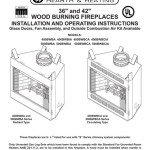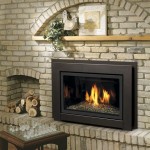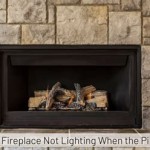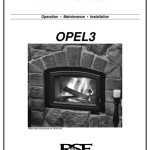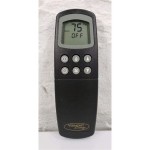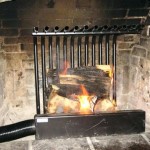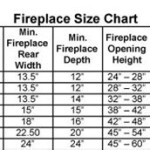Understanding the Fireplace Igniter Switch
The fireplace igniter switch is a crucial component in modern gas fireplaces, providing a safe and convenient method for initiating the burning process. This seemingly simple device represents a significant improvement over older methods like manually lighting pilot lights with matches or lighters. Its design and function ensure ease of use and contribute significantly to the overall safety and reliability of a gas fireplace system.
The primary function of the igniter switch is to activate the ignition system within the fireplace. This system, typically electronic, generates a spark or heat source that ignites the gas flowing to the burner. Understanding the different types of igniter systems and the role of the switch in initiating them is essential for troubleshooting and maintaining a gas fireplace.
The switch itself is often a simple on/off mechanism. However, some models incorporate more sophisticated controls, such as variable flame height adjustment or remote control compatibility. Regardless of the complexity, the core function remains the same: to initiate the ignition process and allow the fireplace to operate safely and efficiently.
Types of Fireplace Igniter Systems
Several different ignition systems are commonly used in gas fireplaces, each with its own advantages and operational characteristics. The most common types include standing pilot ignition, intermittent pilot ignition (IPI), and direct spark ignition (DSI).
Standing pilot ignition systems feature a continuously burning pilot light. The igniter switch, in this case, activates the main burner by allowing gas to flow to it. The pilot light then serves as the ignition source for the main burner. While historically common, standing pilot systems are less energy-efficient due to the constant gas consumption of the pilot light, even when the fireplace is not in use.
Intermittent pilot ignition (IPI) systems utilize an electronic ignition system to light the pilot light only when the fireplace is turned on. The igniter switch activates the electronic ignition module, which generates a spark to ignite the pilot light. Once the pilot light is established, it ignites the main burner. IPI systems offer better energy efficiency compared to standing pilot systems as the pilot light only burns when in use.
Direct spark ignition (DSI) systems are the most energy-efficient. They eliminate the need for a pilot light altogether. The igniter switch activates the electronic ignition module, which generates a spark directly at the main burner. This spark ignites the gas flowing from the burner, eliminating the energy waste associated with a continuously burning or intermittently lit pilot light.
Components of a Fireplace Igniter Switch Mechanism
The fireplace igniter switch mechanism, though seemingly simple, consists of several interconnected components that work together to initiate the ignition process. These components include the switch itself, wiring, and the connection to the ignition module. Failure of any of these components can result in ignition problems.
The switch itself is typically a simple toggle or rocker switch. When activated, the switch completes an electrical circuit, sending a signal to the ignition module. The quality and construction of the switch are important for its durability and reliability. A faulty switch can prevent the ignition system from activating, even if all other components are functioning properly.
Wiring plays a crucial role in transmitting the signal from the switch to the ignition module. Damaged or corroded wiring can interrupt the signal, preventing the ignition system from working. Regular inspection of the wiring for signs of damage is essential for maintaining the proper function of the igniter switch.
The connection between the switch and the ignition module must be secure and free of corrosion. Loose connections or corrosion can create resistance in the circuit, weakening the signal and preventing the ignition module from activating. Cleaning and tightening connections can often resolve ignition problems related to poor electrical contact.
Troubleshooting Common Igniter Switch Problems
Several common problems can arise with fireplace igniter switches, leading to ignition failures. These problems often involve the switch itself, the wiring, or the ignition module. Diagnosing and addressing these issues promptly can ensure the continued safe and efficient operation of the fireplace.
A common problem is a faulty switch. Over time, the switch contacts can become worn or corroded, preventing the switch from properly completing the electrical circuit. Testing the switch with a multimeter can determine if it is functioning correctly. If the switch is faulty, it will need to be replaced.
Wiring problems are another common cause of ignition failures. Damaged or corroded wiring can interrupt the signal from the switch to the ignition module. Inspecting the wiring for signs of damage, such as frayed insulation or corrosion, is essential. Replacing damaged wiring can often resolve ignition problems.
The ignition module itself can also be the source of problems. The ignition module is responsible for generating the spark that ignites the gas. If the ignition module fails, it will not be able to generate the spark, preventing the fireplace from igniting. Testing the ignition module with a multimeter or other diagnostic tools can determine if it is functioning correctly. If the ignition module is faulty, it will need to be replaced. Understanding the type of ignition system (IPI or DSI) is crucial before attempting to diagnose or replace the module.
In addition to these common problems, other factors can contribute to ignition failures, such as low gas pressure or a blocked burner. Consulting the fireplace's owner's manual and seeking professional assistance if necessary are crucial steps in troubleshooting and resolving ignition problems.

Fireplace Millivolt Electronic Ignition Valve Kit For Use With A Wall Switch 82k Btu

Fireplace Millivolt Honeywell Electronic Ignition Valve Kit For Use With A Wall Switch High Capacity 270k Btu
My Fireplace Starts With An Igniter Switch Does It Consume Gas Or Electricity How Do I Know Whether Is Electric Quora

Electronic Ignition Gas Fireplace Valve Kit Firepit Outfitter Fire Pit

Electronic Ignition

Identifying Gas Fireplace Parts Www Mygasfireplacerepair Com

Universal Push On Igniter Kit 660 0001 The Home Depot

How To Light The Pilot On A Gas Fireplace

Gas Fireplace Won T Stay Lit Magic Touch Mechanical

How To Light Start A Gas Fireplace Using Real Example

